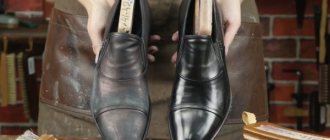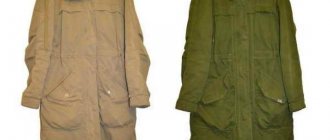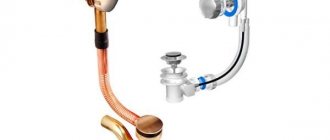The main heat-resistant paints and varnishes (paint and varnish materials) suitable for painting heated towel rails are alkyd, acrylic enamels, silicone, and water-dispersion paints. The coating must be durable, withstand high temperatures and be renewed regularly. Then the structure will last a long time, and its metal will not corrode. Below are the types of suitable paints and the features of different materials for heated towel rails. A step-by-step guide is provided on how to prepare the surface and paint it.
The heated towel rail is painted with metallic paint with a chrome plating effect Source mstal-store.ru
Selecting the right paint
In order for the new coating to last for more than one year, you need to choose a paint that would be suitable for the operating conditions of the heated towel rails. The same principle is also suitable for selecting a primer, which is used to pre-treat the surface.
Requirements for paintwork materials for heated towel rails
The paint must have the following properties:
- moisture resistance;
- wear resistance;
- resistance to friction, mechanical stress (shocks, chips, scratches);
- anti-corrosion;
- non-toxic;
- environmental safety;
- hypoallergenic.
Paint for finishing walls, ceilings or facades is not suitable for painting sanitary heating equipment in the bathroom. It quickly peels off and peels off. You need paint that can withstand high temperatures at all times. Some coil systems heat up from +120℃ to +180℃, others from +180℃ to +220℃. You need to buy paintwork materials that are designed to cover the surfaces of heating radiators and pipes of heating systems.
Types of primers
The most suitable primers for applying to the surface of a heated towel rail:
- GF-21;
- primer-enamel "NOVA and Co";
- Eckart.
Soil, like paint, must withstand high temperatures and their sudden changes. After priming, the paint coating lasts longer than when painting the surface of equipment without primer preparation.
Choosing a coloring agent
Pipe paint plays a big role in repair work. The modern market offers a wide selection of paint and varnish products. Coloring agents most often used to treat heating elements:
- Alkyd enamel. The product has excellent resistance to high temperatures (up to +100°C). When a sudden heating shutdown occurs, you don’t have to worry about the coating - it will withstand temperature changes.
It must be remembered that when painting pipes, you should follow the instructions for the coloring agents, and also work with gloves and using special brushes.
Preliminary work and preparation of tools
You need to start painting the heated towel rail after preliminary treatment of its surface. If this is not done, the paint will quickly crack, peel off, or rust will appear through the layer, and the coating will become completely unusable.
Tools, devices, related materials
To prepare the surface of the structure and paint itself, in addition to paint and varnish, you will need:
- gloves;
- putty knife;
- wire brush or piece of sandpaper;
- Screwdriver Set;
- pliers;
- flute brush – 2 pcs. (narrow and wide);
- pile roller;
- paint sprayer (if necessary);
- adhesive primer with anti-corrosion properties;
- solvent or any detergent;
- rags.
It is best to use a brush with natural bristles. Then the application and distribution of the layer will be uniform, without streaks, omissions or unsightly streaks. Instead of a brush, you can use a roller with a coat of short pile.
If pipes need to be painted quickly and evenly, then use a pneumatic device - a paint sprayer. But in this case, you need to paint the structure before its installation, or cover all adjacent areas on the wall with a special painting film. The film must be secured well. Spray primer or paint on all sides of the heated towel rail.
But the standard way to paint heated towel rails is to remove them from the wall using screwdrivers and pliers. Then the whole process is carried out - cleaning to metal, degreasing, priming, painting, complete drying. Only after this is the structure installed back in its place by screwing the screws into their original sockets.
Before painting, it is best to remove the heated towel rail with pliers and a screwdriver Source polotentse-sushitel.ru
A heated towel rail without shut-off taps is removed with an angle grinder during the non-heating season Source remboo.ru
The process of painting and drying a heated towel rail in the bathroom
The paint is applied to the already dried primer. If the adhesive layer is not dry enough, then you need to wait and do not paint the surface. The mixture of paints and varnishes is thoroughly shaken or mixed gently. Some types of enamels need to be mixed in several stages, so pay attention to the consistency of the painting product. A mass well prepared for use is homogeneous, without floating oil or other liquid.
You need to apply several layers. But between them there is always a drying interval - the previous layer must be completely dry. And not touch-sensitive, but according to the instructions included with the finishing material. Approximately each layer dries and is completely hardened in 40-60 minutes.
After the heated towel rail is completely painted, it is left to dry until completely hardened for another day. There are craftsmen who recommend letting the paint dry for at least 3, 4 or 5 days. Only after this can it be used. During drying, the level of relative humidity in the room should not exceed 50-60%. Therefore, it is recommended not to use the bathtub while the paint on the equipment is drying.
Black paint was used to paint the surface of the heated towel rail Source ad-cd.net
Sunerzha - STAINLESS steel dryers: how to choose the best
Like many other pieces of bathroom equipment, heated towel rails have been the subject of significant engineering and design efforts at the beginning of the 21st century. Their goal was to bring this essentially simple heating device to the level of a work of art.
All that glitters is not stainless steel
For many users of heated towel rails, it doesn’t matter what they are made of, as long as they dry. But even those who prefer such equipment made specifically from stainless steel do not always have a clear idea of what “stainless steel” is. But, firstly, stainless steel can be different, and in order not to go into technical details and not to use specialized terms, in this article we will only indicate the parameters of the steel used.
Photo: Valery Stobbe
Food grade stainless steel AISI 304 is a modern, reliable material used for the production of heated towel rails and radiators. Special technologies are required both to create stainless steel itself and to weld parts made from it. In order to provide welded seams with strength identical to that of steel, technologists and designers decided to use the so-called TIG (Tungset Inert Gas) method. This is welding with a tungsten electrode in an inert gas, without the use of filler metal. Test results show that heated towel rails intended for installation in a hot water supply or heating system, given the above parameters, are capable of withstanding water pressure of up to 25 atmospheres. By the way, in Russian heating networks under standard operating conditions the pressure is practically not raised above 12 atmospheres.
There are heated towel rails to suit your taste and color
Modern consumers, thanks to the worldwide computer network, can learn about the latest technologies almost as quickly as manufacturers. The same applies to fashion for certain colors and textures. The developers of the Sunerzha heated towel rail collections take all this into account. They constantly introduce models of new shapes, colors and finishing methods into production.
Photo: Valery Stobbe
21st century buyers have quickly become accustomed to the ability to choose the color and type of finish of home equipment. This is what Sunerge designers are trying to provide them with, offering various colors and finishes. Vacuum spraying improves the durability of the metal, and powder coating helps increase the heat transfer of pipes.
At the MosBuild 2014 construction exhibition, the Sunerzha exposition attracted visitors not only with its smooth and shiny surfaces, but also with its velvety flocked surfaces.
Photo: Valery Stobbe
In addition to the shapes and colors, the originality of the heated towel rail model can be emphasized by specially designed components in the same style: shelves, hangers, hooks, as well as valves, corners and holders.
Large towels - large heated towel rails, if the bathroom allows
The dimensions of a heated towel rail intended for connection to a hot water supply or heating system are best determined in accordance with the volume of the bathroom and the size of the wall chosen for its installation. With a relatively small wall surface for a heated towel rail in a large bathroom, you can use models with improved convection properties.
Photo: Valery Stobbe
Autonomous or systems dependent
All models of Sunerzha heated towel rails can be divided into two categories according to the heat source: water and electric. Water radiators are connected to a hot water supply system or central heating. The water temperature in these systems usually does not exceed 70°C.
In electric radiators, the main coolant is household antifreeze, which is poured into the pipes during the production of heated towel rails. A small device, usually called a heating element (tubular electric heater), converts electricity from a 220-volt network into heat. With it, users typically heat antifreeze to a temperature in the range of 55 to 70°C.
Photo: Valery Stobbe
Heated towel rails, among other things, are also divided by specialists according to the type of connection. Sunerzha usually produces these devices with side connections (vertical) and diagonal/bottom connections. It is better to clarify what this means in your specific case during the purchasing process, but, more often than not, this does not significantly narrow the choice.
More details about the features of electric and water heated towel rails using the example of Sunerzha products are described in more detail in the article “Water or electric: when and which heated towel rail is better to choose?”
Photo: Valery Stobbe
Bathroom climate control during local warming
The fact that the Sunerzha electric heated towel rail has an automatic temperature control unit built into the heating element is probably considered common and ordinary by most modern buyers. Of much more interest is a water radiator, equipped at the customer’s request with an automatic thermostat. There is a certain attractive contradiction in this: the device is connected to a common source of hot water, and at the same time, it is possible to set the desired temperature.
We wish you the right choice of the best heated towel rail for your circumstances.
Recommendations and useful tips
Tips for painting heated towel rails:
- When removing dirt or old paint, it is important to go especially carefully with sandpaper or a wire brush along the bends and joints with wall fasteners.
- Using a spray gun (paint sprayer) you can not only distribute the paint evenly over the surface of the entire structure, but also save money - reduce the consumption of paintwork materials.
- The best period for painting an already installed heated towel rail is any time outside the heating season. The heated towel rail cannot be painted when it is hot. The enamel simply won’t lay down evenly and won’t dry properly.
- If the enamel initially seems to be too dense in consistency, you need to dilute it with a solvent suitable for the type of paint.
- Before applying enamel, you need to make sure that there is no condensation on the pipes.
If you do not remove the entire previous layer of coating, the new paint will not adhere well or will not last long. This is especially true for old chrome coating - new paintwork materials are distributed extremely poorly over it.
Using sandpaper you can quickly clean rust from pipes Source mykrasim.ru
How to work with a chrome heated towel rail?
If a modern heated towel rail does not fit into the bathroom interior, its appearance can also be changed. Not every paintwork material is suitable for chrome: most either slip off or are quickly erased from the surface of the product. You will have to sand or sandblast it to remove the chrome plating down to bare metal. Afterwards, you can prime and paint the coil as usual.
If you don’t want to carry out such serious preparation, you can buy high-quality Tessarol or Hammerite and apply it directly to the chrome, although the price of the work will be quite high. Before painting, there is no need to sand or prime – you can simply degrease the product with any solvent.
Painting a heated towel rail is not a very difficult or tedious task; it can be done independently. A new product will last a long time if you choose high-quality paint, so there is no need to skimp on material.










